The last Soviet APC
The BTR-60 and 70 have been already the most prolific of their type (8 wheeled APCs) worldwide with over 30,000 built and hundreds of variants, carrying rapidly platoons of the Soviet motorized battalions in an NBC environment. With the BTR-70 the armament was somewhat upgraded by a 14.5 mm KPVT heavy machine gun turret for infantry support. However, there were still issues with the BTR-70 that needed to be addressed and improvements to be made. The range of modifications would end in the 1980s with a brand new model, denominated BTR-80 but first approved for service in 1986, which saw action in Afghanistan and is now the practical replacement of the older BTR-60 in the Russian Army today, with the addition of an IFV, the BTR-80A.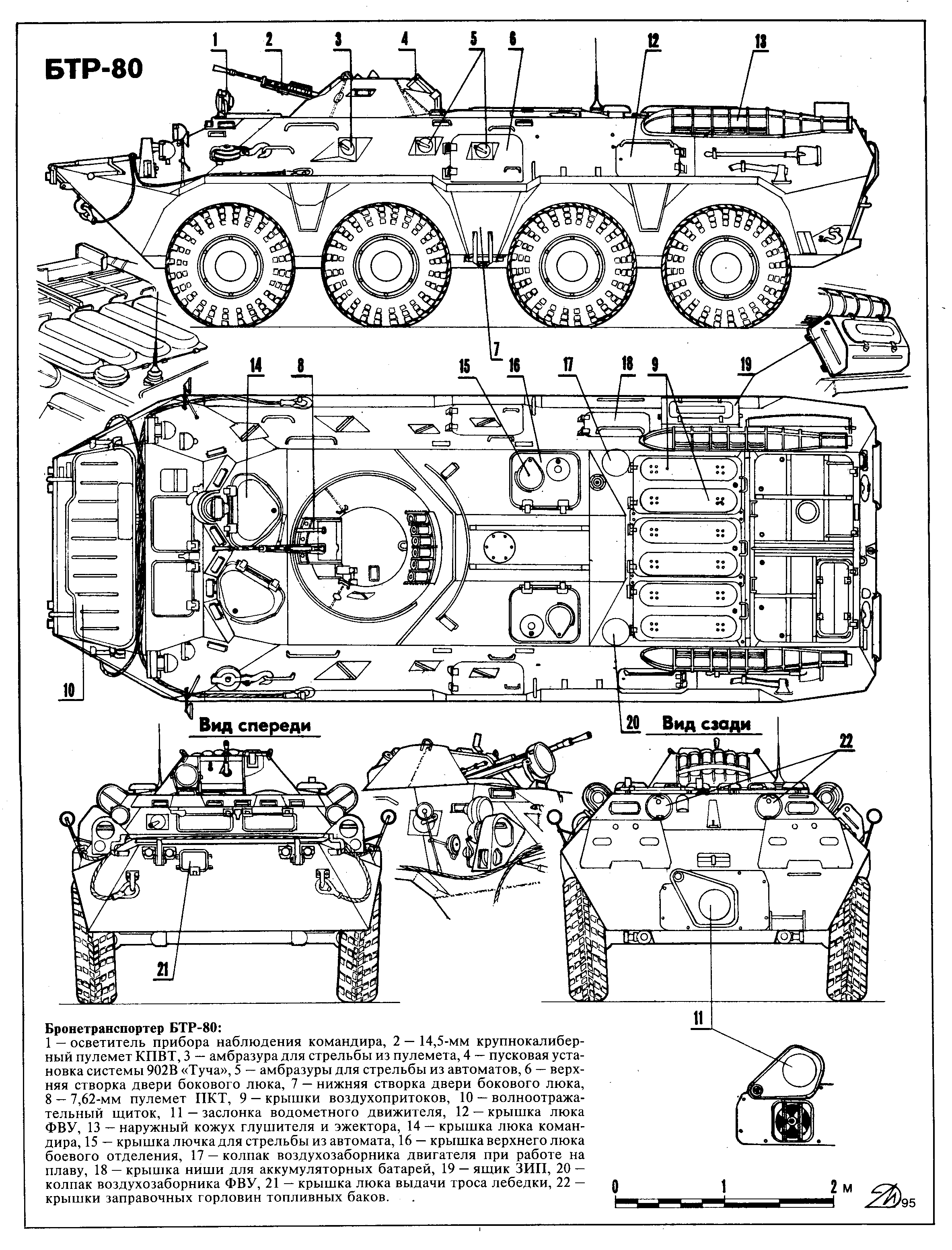
BTR-80 blueprint
Development (GAZ-5903)
The new Bronetransporter manufactured by Arzamas (GAZ) at Nizhniy Novgorod had to keep the same features than the former BTR-70 and was based on the latter as much as possible to keep development costs down and facilitates its production. It was still amphibious, NBC-protected, had the same carrying capacity and overall performances and kept the same armament. In fact, similarities were such that many BTR-70 were later upgraded to the BTR-80 standard as the BTR-70M.But comparisons stop there. One of the major critiques were about the unsatisfactory twin diesel engine arrangement, which was removed of by adopting a single one, which was more powerful. Side access doors were modified, the turret was redesigned, offering a better elevation and fitted with six smoke grenade projectors, the firing ports also (and some angled differently), and the gunner's station was altered. Since 1986, the BTR-80 was produced right up to the dislocation of the Soviet empire.
It was resumed after 1990 with the gradual introduction of the BTR-80M in 1993, the BTR-80A in 1994 and ultimately the BTR-82 in 2009. Manufacturing and upgrade process is still ongoing but the main production today established itself at around 5,000+ vehicles. The plant is now upgrading vehicles and producing for the export market. It still goes on in Ukraine with new upgraded variants intended for export. New 8x8 APCs took time indeed to materialized, either the BTR-90 IFV armed with the BMP-2 turret and improved armor, and the Bumerang, yet to be scaled-up for mass production.
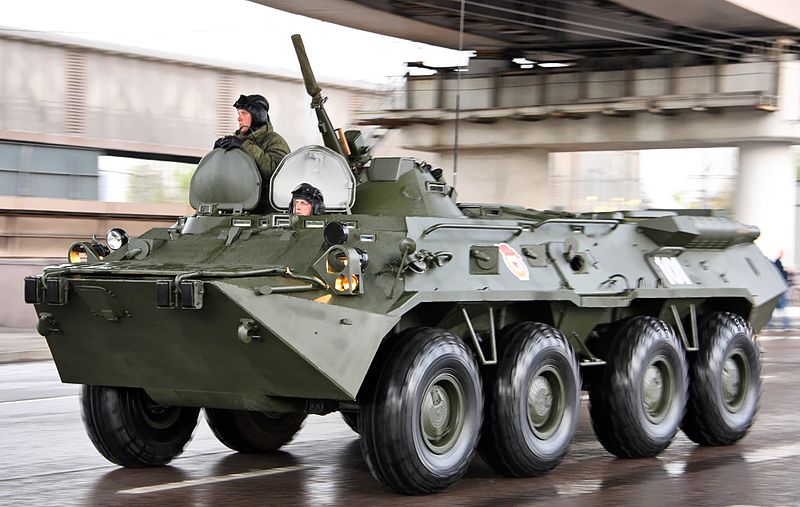 BTR-80 2011 Victory Day Parade
BTR-80 2011 Victory Day Parade
Design
General Outlook and configuration
In the heart of action it would have been difficult to distinguish between the BTR-70 and 80 as they shared practically the same appearance, although the easiest point would be the rear engine compartment with raised exhausts, and up close the modified welded turret with faceted sides, then would came external details like the shape and position of the pistol ports and sights. Both vehicles shared the same "boat-like" hull with a sloped beak, armored shutters and sets of TNPO vision blocks for the commander and driver. They have in addition TNP-B and TKN-3 vision devices and an OU-3GA2M infra-red searchlight mounted on top of the cabin.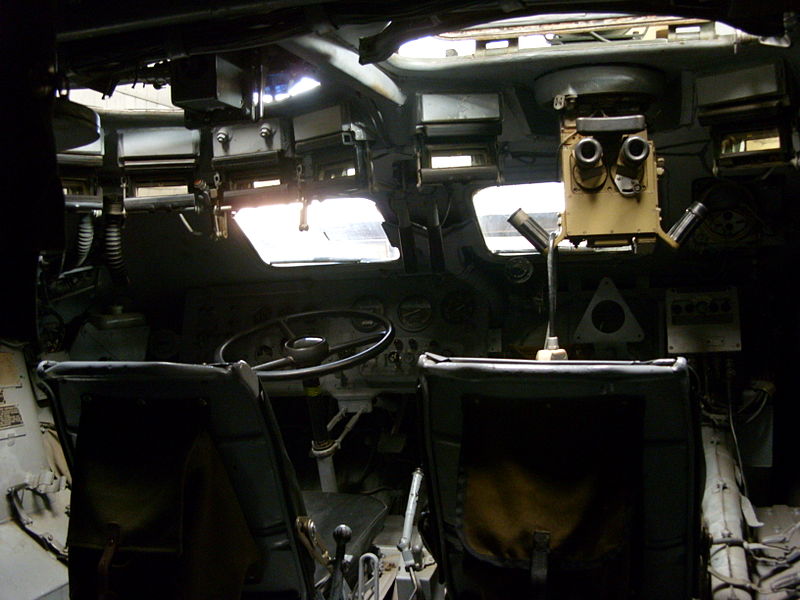 BTR-80 interior
BTR-80 interior
The gunner is located behind in the center. His position remains unchanged, with a roof-mounted chair located above the flat floor and behind the driver/commander and two passengers slightly behind. The crew compartment can still carry a full platoon of 7 infantry, that still disembarks from the vehicle even in motion through the central side doors. The rest of the equipment comprises radio sets R-173 or R-163-50U and an intercom. There is no sign of a central tires inflation system, however.
The hull is made of welded rolled homogeneous steel with the central divide between the sloped lower and upper parts. Fully amphibious with a rear propeller, front trim vane and roof-mounted air collectors, it is fully amphibious, swimming at 10 kph, NBC-protected with automatic fire extinguishers in the crew and engine compartments, and protected from all sides from small arms fire and splinter while the frontal arc is protected against heavy machine gun rounds.
These doors are completely redesigned: They are now split horizontally with the upper portion opening forward, giving dismounting infantry better some protection from incoming fire from the front, while the lower part opening down form a step. This configuration also allows infantry to exit from another side in case one is under fire. The old pear-shape firing ports are get ridden off, replaced by encased round ones and using the same ball-mounts as in the BMP-1, offering better protection. The two forward ones are rearranged in a side recess of the hull as to allow better coverage of the front.
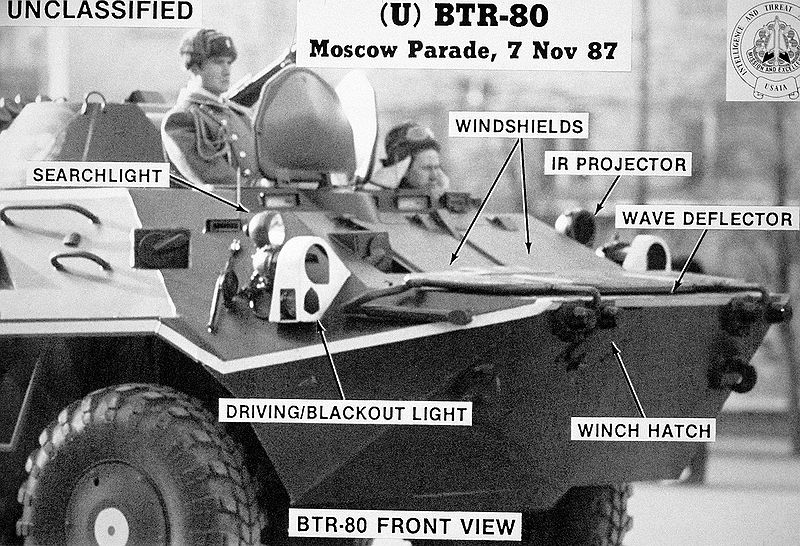 A right front view of a Soviet BRT-80 armored personnel carrier with the vehicle commander and driver visible. Labeled in the photograph are a searchlight, windshields, an infrared light projector, a winch hatch, and driving/blackout lights, 1987.
A right front view of a Soviet BRT-80 armored personnel carrier with the vehicle commander and driver visible. Labeled in the photograph are a searchlight, windshields, an infrared light projector, a winch hatch, and driving/blackout lights, 1987.
The other major change concerns the main armament turret: Although the KPVT 14.5 mm heavy machine gun is retained as well as the coaxial KPT 7.62 mm LMG, the turret is completely modified. The cone shape was abandoned for an 8-faceted welded one, with an ever greater slope and presenting a slimmer target, but overall a completely modified mantlet that allows for a far greater elevation of 60 degrees. Not only that this allows to fire on incoming helicopters, but also high-up targets like in an urban environment and from a steep slope. Another major improvement is the addition of a pack of six 902V "Tucha" smoke dischargers on the rear slope of the turret providing concealment for the vehicle.
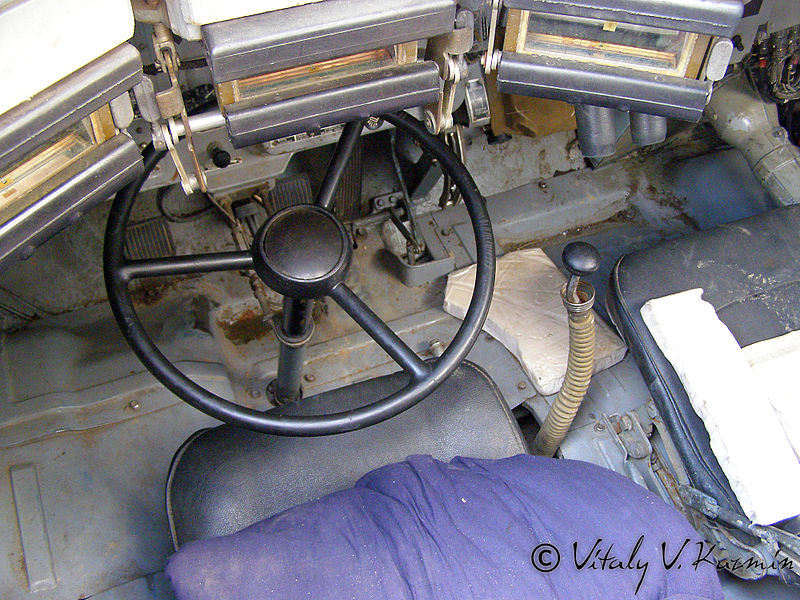
BTR-80 Moskow OMON driver sight
Mobility
The other major change concerns the engine and completely redesigned rear compartment: At its core, the BTR-80 was a single diesel-engined variant of the BTR-70. The new diesel KamAZ-7403 provides 260 hp (190 kW) instead of two gasoline ZMZ-4905. 120 hp (88.2 kW) which turned to be, although cost-effective on paper, an unreliable solution. The diesel also had the advantage of a lower ignition temperature and to procure greater range. Eventually, it also provided slightly more torque but the power-to-weight was relatively lower overall at 19h/ton vs. 20hp/ton. Despite this top speed was nearing 90 kph whereas the BTR-70 was capable of 80 kph at best on flat. It was coupled to a manual 5-speed transmission and 2-speed transfer case. It could also swim faster, climb a slope up to 60% gradient or vertical step of 0.5 m. The new engine imposed to redesign the rear compartment (raised up), the roof chamfers were eliminated, and the rearward-sloping engine compartment was squared off.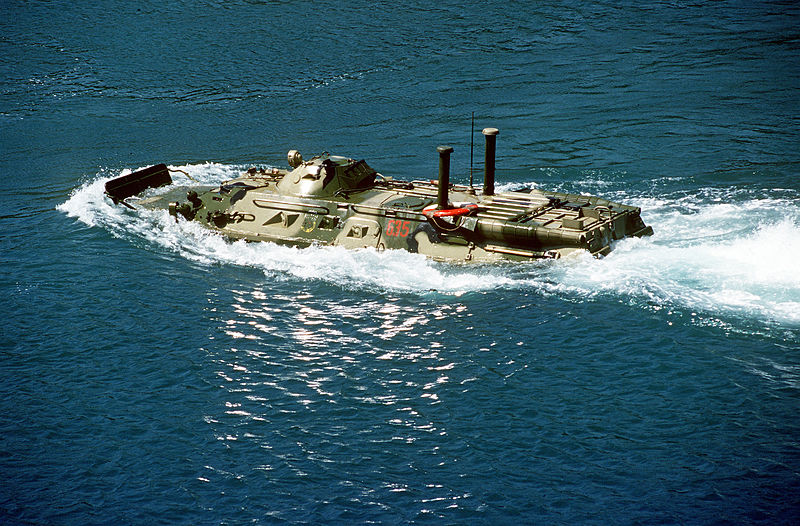 Russian BTR-80 swimming
Russian BTR-80 swimming
Main Variants
The BTR-80M (1993)
This upgraded version was the first Russian one. It was basically a stopgap version equipped with the immediately available DMZ-238M2 engine of 240 hp, a slightly longer hull and new tires, waiting for the manufacturers of the former engine was ready to resume production again.The BTR-80A (1994)
The GAZ-59034 was basically a "semi-IFV" variant, because of the upgraded autocannon, but without the necessary armor upgrades to be considered as a true IFV. Nevertheless, it was a considerable step forward in terms of capabilities both against vehicles, but also helicopters and low-flying aircrafts. The 30 mm gun 2A72 fed by 300 rounds is a remote system based on the BPPU turret equipped with smoke dischargers, while the gunner below has 1PZ-9 (day) and TPN-3/TPN-3-42 "Kristall" (night) sights. It was also declined into the BTR-80S which get back the 14.5 mm KPVT for the internal security forces of the MVD and the BTR-80AK command version with two whip antennae, new radio equipment and all pistol ports welded shut but one. The recce sub-version BRDM-3 is given a day/night vision device in front of the commander's position.The BTR-82 (2009)
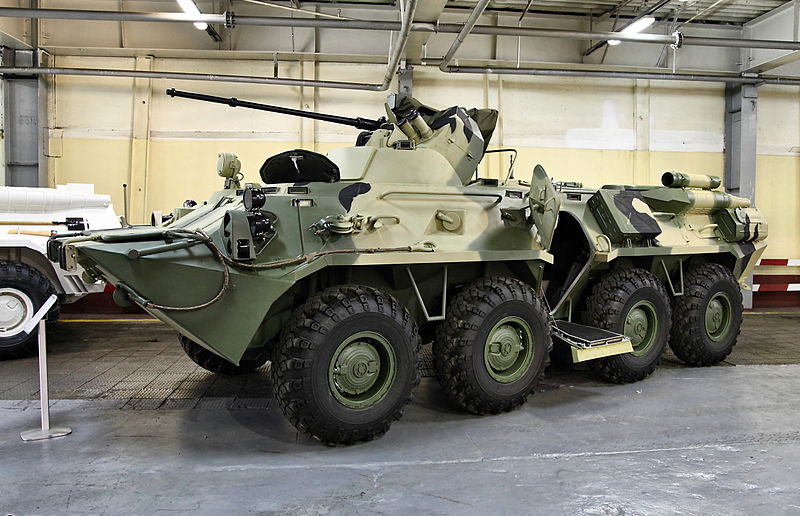
Revealed for the first time in November 2009 (it entered service in 2011) the BTR-82 came as a stopgap vehicle since the BTR-90 development seemed to be in trouble. It is given an improved armor with interior spall liners, a more modern night vision device TKN-4GA, and the GLONASS navigation system. Last but not least it is equipped with a more powerful engine of 300 hp to cope with the weight of added armor and additional equipment. The original KPVT is retained but housed in the new remote controlled BPPU turret.
The BTR-82A (2013)
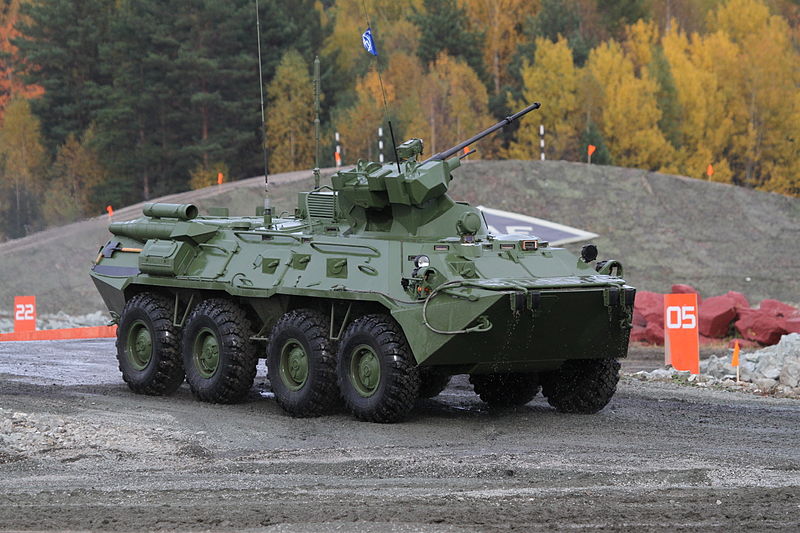
Russian BTR-82A
The latest variant of the BTR-80 was revealed in 2014, based on the BTR-82 it had, in addition, the new TKN-4GA-02 sight, and more importantly the 30mm gun 2A72 main gun. Adoption was announced by Defense Minister Sergey Shoygu in early 2013. In service since 2014, this is also a new standard of upgrade for former BTR-80s, like the BTR-82AM which is characterized by welded shut embrasures in the frontal part of the vehicle and is used by the navy.
Specialized Variants
The 2S23 "Nona-SVK" (1990)
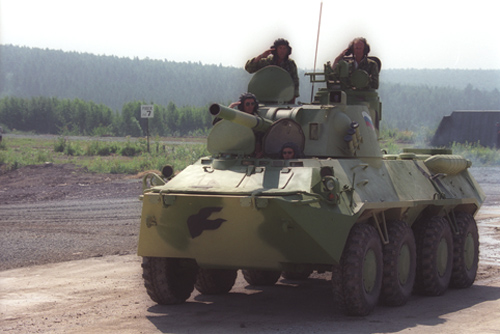
A derivative of the BTR-80 for infantry close fire support, armed with a 120 mm 2A60 rifled gun/mortar in a brand new turret. The mortar is derived from the 2S9 Nona light tracked SPG and the vehicle has a crew of only 4.
BREM-K
The ARV version (BREM stands for bronirovannaya remontno-evakuatsionnaya mashina). It is equipped with towbars, a winch, a light crane plus welding equipment.RKhM-4
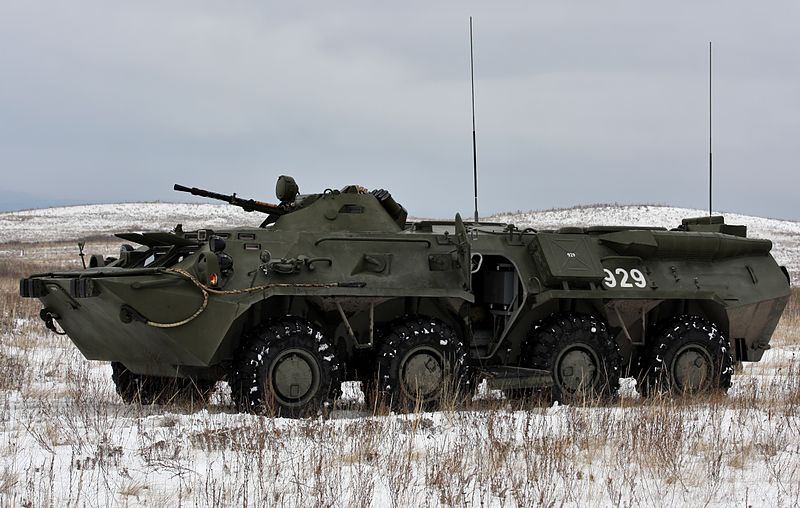
(For "razvedivatel’naya khimicheskaya mashina"). Specialized NBC reconnaissance vehicle. The hull is completely overhauled for that purpose, with the IMD-21BA and DP-5V detection systems, system GSA-12 automatic chemical alarm, chemical agents KPKhR-3 detection set, MK-3M meteo set, KPO-1 sampling device, ASP automatic detector and KZO-2 flag dispenser used to mark contaminated areas. It's pretty much the Russian equivalent of the western TPZ Fuchs. The RKhM-4 was declined into the improved RKhM-4-01, RKhM-4-02, RPM-2 Mobile radiological reconnaissance station (2000) and RKhM-6 "Povozka" (2013), an all-out upgraded variant with Satcom and inertial navigation.
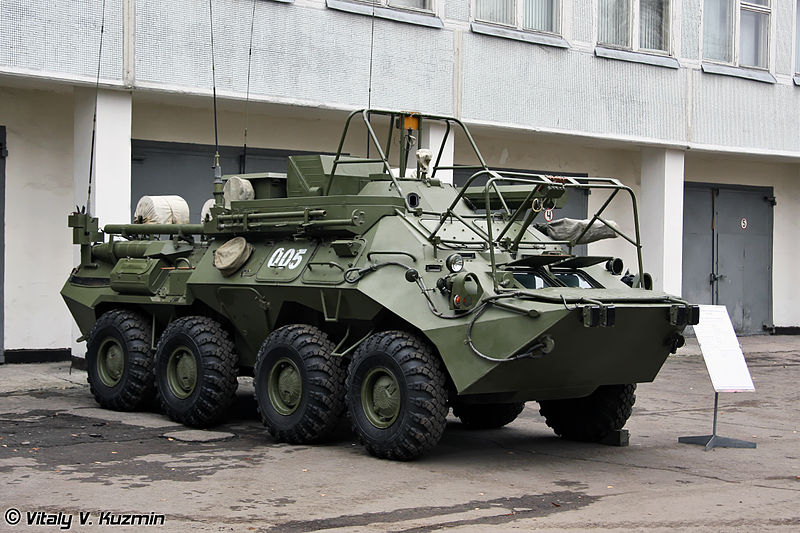 R-166-05 radiostation 27th Independent Sevastopol Guards Motor Rifle Brigade
R-166-05 radiostation 27th Independent Sevastopol Guards Motor Rifle Brigade
Other variants
-
- BTR-80 PBKM command vehicle
- R-149BMRA/MA3 signals vehicle
- R-439-BK1 satcom vehicle
- "Tajfun-M" Strategic Rocket units (RVSN) tracking vehicle
- ZS-88/89 PsyOps vehicle with loudspeaker set
- K1Sh1 standard command post vehicle. The brand new, roomier hull is also used for the following vehicles:
-E-351BrM mobile electric power station vehicle
-PU-12M6/M7 battery command vehicle
-1V152 command/forward observer vehicle for field artillery units
-R-149BMR signals vehicle
-R-149MA3 command and signals vehicle
-R-165B HF signals vehicle
-R-439-MD2 and R-439-BK "Legenda 2BK" mobile SatCom stations.
-P-240BTZ switchboard vehicle with the "Zenit" set
- "Infauna" electronic countermeasures variant (for the airborne)
R-149MA1
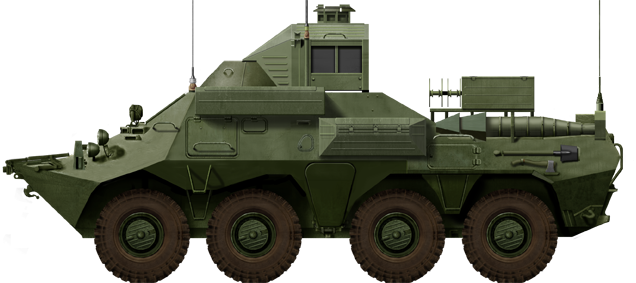
Author's Illustration of the R149MA1
The R-149MA1 command and staff vehicle is designed to provide command and communications at tactical-level, stationary and on the move. It's usable as a forward mobile command post at any operational level. It provides simplex and duplex VHF and HF radio channels, as well as wired communication channels, enabled data reception and transmission, allowed conference calling, selective and broadcast communications from all workstations, loudspeaker communication from the commander's workstation. It is also fitted for electronic terrain maps and to display the operational and tactical situation as well as transmitting it via communication channels, as well as providing special calculations.
The R-149MA1 is based on the BTR-80, with the modified K1Sh1 body, taller and with extra apparatus, surveillance and Communication Equipment. For the VHF radios it houses a R-168-100UE-2, R-168-5UNE-2, R-168-0.1U(M)1E, Prima-DMV. For the HF radios is houses the R-168-100KBE and Prima-KV. The VHF radios has a range of up to 25 km while moving and up to 55 km while stationary and the HF radios with a range of up to 350 km while stationary. The power supply of 380V, 50Hz enabled continuous operations for 24 hours. There is a diesel generator and the chassis electrical system with the engine running for the same, as well as a backup, the buffer battery which could power all systems for at least 10 minutes.

pinterest photo by Vitaly Kuzmin
Exports
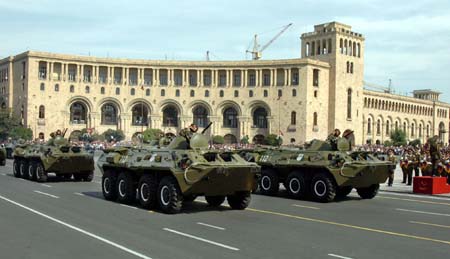
Armenian BTR-80s
The BTR-80 was sold to the following:
 Afghanistan
Afghanistan Algeria
Algeria Angola
Angola Armenia (160)
Armenia (160) Azerbaijan (70 BTR-80A 2007)
Azerbaijan (70 BTR-80A 2007) Bangladesh (1030+ in service including variants delivered 1994-2012 and ongoing)
Bangladesh (1030+ in service including variants delivered 1994-2012 and ongoing) Belarus (194 BTR-80A)
Belarus (194 BTR-80A) Columbia (5, licence prod. abandoned)
Columbia (5, licence prod. abandoned) Djibouti (15)
Djibouti (15) Estonia (20) passed on to Ukraine 2022
Estonia (20) passed on to Ukraine 2022 Georgia
Georgia Hungary (513 BTR-80 and 178 BTR-80A), likely passed on to Ukraine
Hungary (513 BTR-80 and 178 BTR-80A), likely passed on to Ukraine India
India Indonesia (12+ Marines and Cavalry)
Indonesia (12+ Marines and Cavalry) Ivory Coast (6)
Ivory Coast (6) Iraq (new army 98 BTR-80UP)
Iraq (new army 98 BTR-80UP) Kazakhstan (190 BTR-80, 90 BTR-80A)
Kazakhstan (190 BTR-80, 90 BTR-80A) Kenya (8 BRDM-3)
Kenya (8 BRDM-3) Kyrgyzstan (8)
Kyrgyzstan (8) Macedonia (12)
Macedonia (12) Moldova (11)
Moldova (11) Mongolia (20)
Mongolia (20) North Korea (32)
North Korea (32) Pakistan (120 BTR-70/80)
Pakistan (120 BTR-70/80) Romania (70 declined into local TAB Zimbru)
Romania (70 declined into local TAB Zimbru) Sri Lanka (33 BTR-80/80A)
Sri Lanka (33 BTR-80/80A) Sudan (30)
Sudan (30) Syria
Syria Tajikistan (26)
Tajikistan (26) Turkey (214)
Turkey (214) Turkmenistan (40)
Turkmenistan (40) Ukraine (456+ acquisitions)
Ukraine (456+ acquisitions) Uzbekistan (290)
Uzbekistan (290) Venezuela (114).
Venezuela (114).
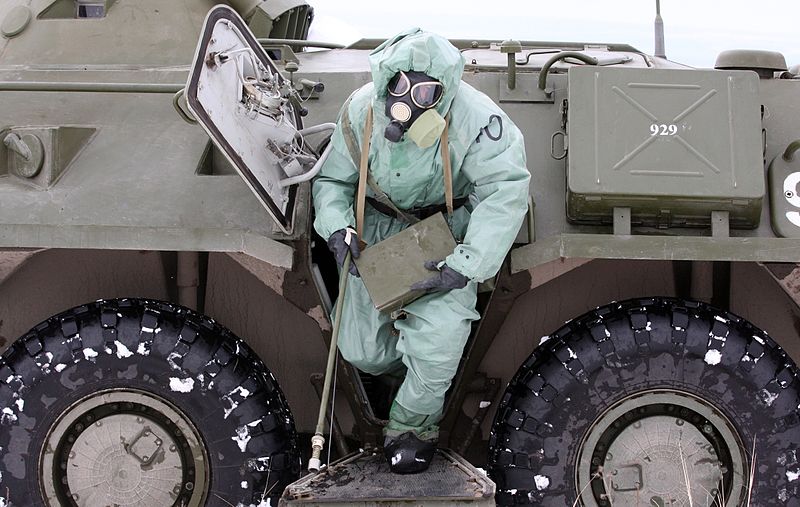 RKHM-4-01 specialized variant
Local modifications include:
-The Columbian BTR-80 "Caribe", modified by COTECMAR (Corporación Tecnológica del Mar Caribe), replacing the KPVT by a cal.50 Browning for the Marines. Although 100 were projected, the program was suspended.
-Estonian BTR-80UNSh (EST), used modified as infantry squad carriers.
-Hungarian BTR-80M, MPAEJ (CEV), MPFJ (clearing vehicle), MVJ (ARV), SKJ (ambulance) and VSF (NBC recce vehicle).
RKHM-4-01 specialized variant
Local modifications include:
-The Columbian BTR-80 "Caribe", modified by COTECMAR (Corporación Tecnológica del Mar Caribe), replacing the KPVT by a cal.50 Browning for the Marines. Although 100 were projected, the program was suspended.
-Estonian BTR-80UNSh (EST), used modified as infantry squad carriers.
-Hungarian BTR-80M, MPAEJ (CEV), MPFJ (clearing vehicle), MVJ (ARV), SKJ (ambulance) and VSF (NBC recce vehicle).-Romanian TAB Zimbru (B33) (transportorul amfibiu blindat) declined into the Zimbru 2000 (will be treated in standalone).
-Ukrainian BTR-80UP and sub-variants KB/KR/S/M/BREM/R/T, BTR-80 Joker, BTR-84 or KShM "Kushetka-B" command vehicle. But locally it was completely overhauled and is now produced as the advanced BTR-3 and BTR-4.
Russia retains 1,152 BTR-80/80A/82A while beginning from 2010 additional BTR-82/82As were purchased of which 300 BTR-82A and BTR-82AM are in service today. The Donetsk People's Republic is allegedly using 300 BTR-80s of various types.
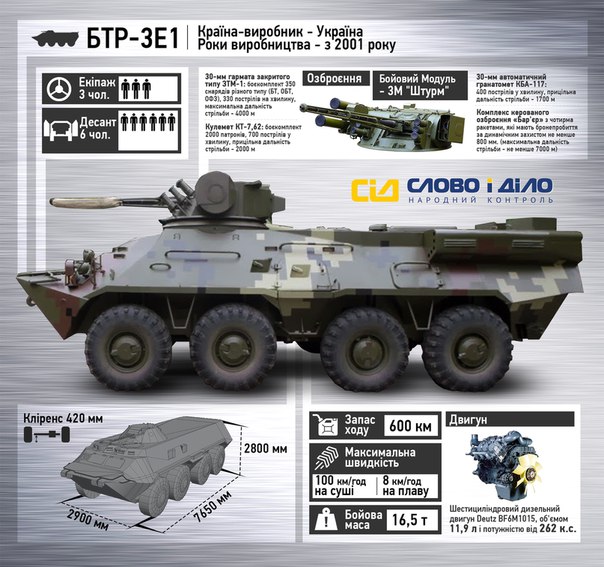
The BTR-80 in action
The BTR-80 would have forty years of service worldwide in 2016, seeing quite a number of engagements in the process:The Soviet War in Afghanistan, the Nagorno-Karabakh War, the Georgian Civil War, the Turkish-Kurdish conflict (Kurdish rebels were equipped with some BTR-80s), Transnistria War, Tajikistan Civil War, First Chechen War, War of Dagestan, Second Chechen War, 2008 South Ossetian War, Iraqi insurgency (2011 to present) and the War in Donbass. Their appearance in the Syrian civil war is possible since some (undisclosed number) were offered by the Russian government to the Bachar El Assad regime in exchange for retiring chemical weapons.
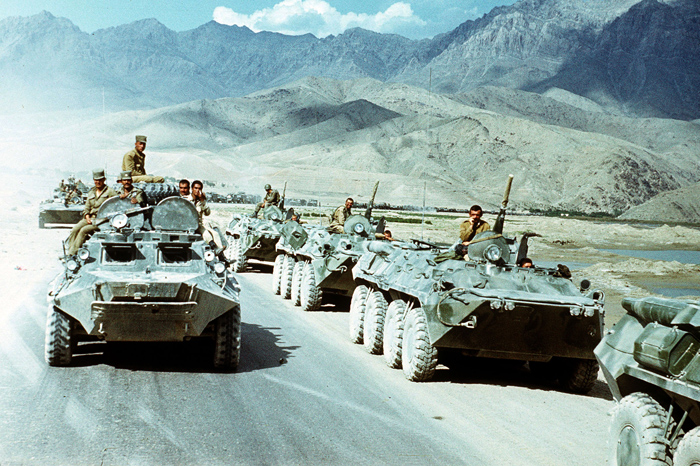
BTR-80 in Afghanistan
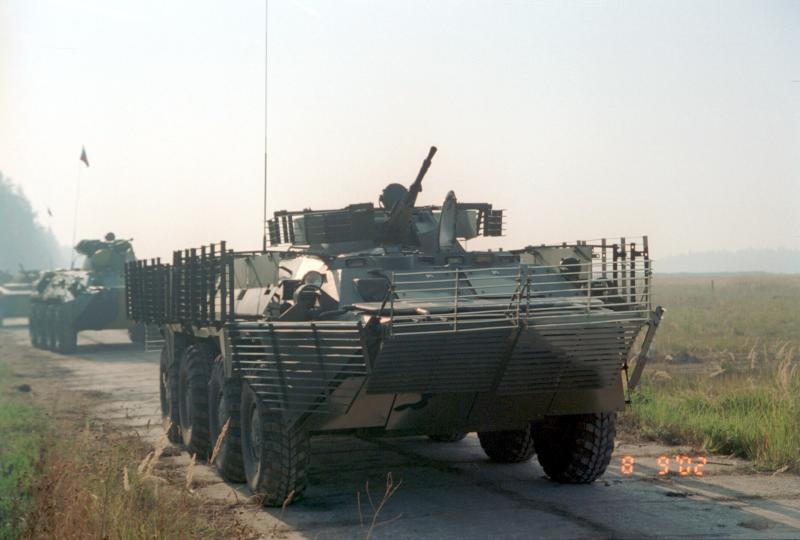
BTR-80 with Slat Armor in 2002
BTR-80 specifications |
|
| Dimensions | 7.7 x2.9 x2.41m (25.3 x9.5 x7.9 ft) |
| Total weight, battle ready | 13.6 tonnes |
| Crew | 3+7 (driver, gunner, commander, 7 infantry) |
| Propulsion | Diesel KamAZ-7403 260 hp (190 kW) P/w 19 hp/t |
| Suspension | 8x8 coil springs |
| Speed (road) | 90 km/h (56 mph) |
| Range | 600 km (373 mi) |
| Armament | 14.5 mm KPVT HMG/30mm 2A72 Autocannon (A) sec 7.62 mm PKT |
| Armor | 6-20 mm frontal arc ( in) |
| Total production | 5,000 from 1984 |
The case of Russian and Ukrainian BTR-80s

After Russia, Ukraine was the world's second largest user of this APC. So far, on the 350 reported in 2022, 57 BTR-80 and 127 BTR-82 (128 according to the latest data on Oryx) with 2 BTR-80M lost. It seems Oryx does not differentiate between the BTR-82 and 82. On the Russian case, 283 were documented lost, so a noticeable difference, as well as no less than 850 BTR-82A(M) combined and 374 BTR-82AT src. The Ukrainian BTR-80s were front and center in the battle of Kherson notably. Ukraine developed also a series of dedicated upgrade versions, namely the BTR-80UP in cooperation with Poland, at first for Iraq (98). They were fitted with a new 300 hp engine, additional armour and air conditioner and were declined into the following, BTR-80UP-KB battalion level command vehicle, BTR-80UP-KR company level command vehicle, BTR-80UP-S staff vehicle, BTR-80UP-M ambulance, BTR-80UP-BREM recovery vehicle, BTR-80UP-R reconnaissance version, BTR-80UP-T cargo version.
There was also the famous BTR-94, Ukrainian's take on the Russian BTR-82 IFV, as well as the KShM "Kushetka-B" command vehicle, based on the K1Sh1 chassis at Radioprylad. More to come.

Captured Russian BTR-80 in 2022
Gallery
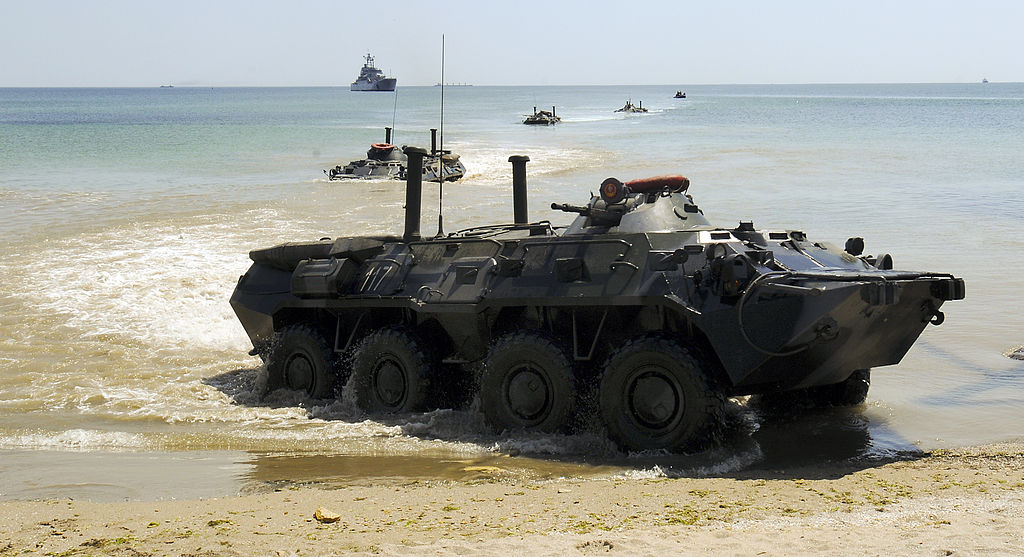 Ukrainian BTR-80 in a landing beach exercise
Ukrainian BTR-80 in a landing beach exercise
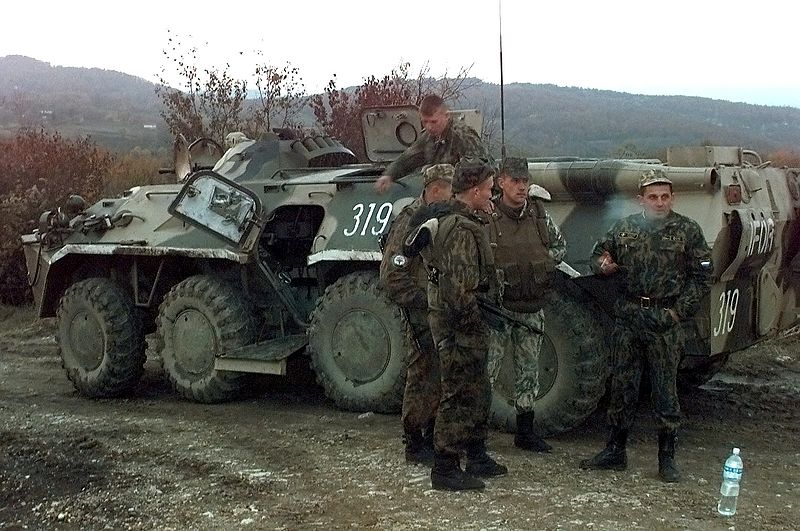

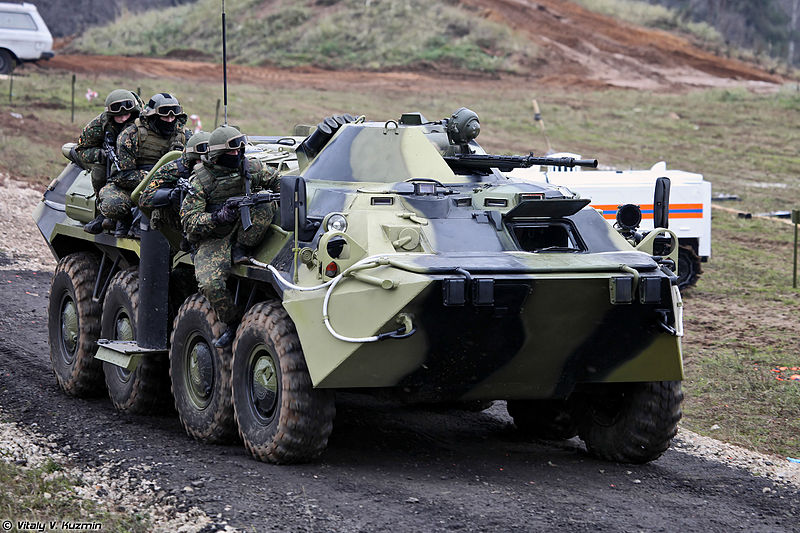
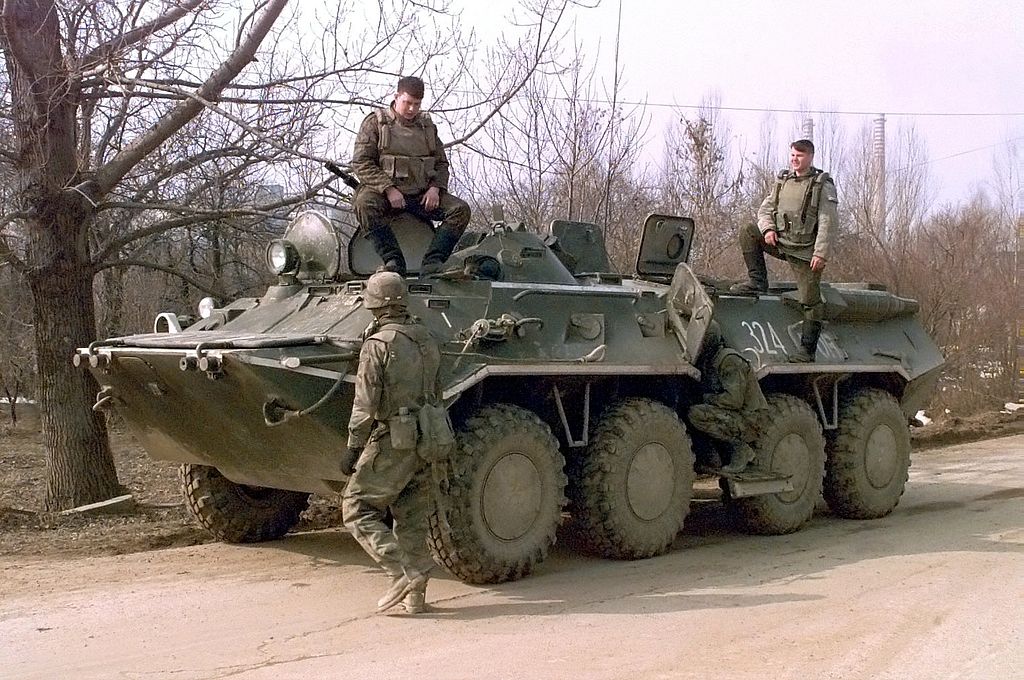
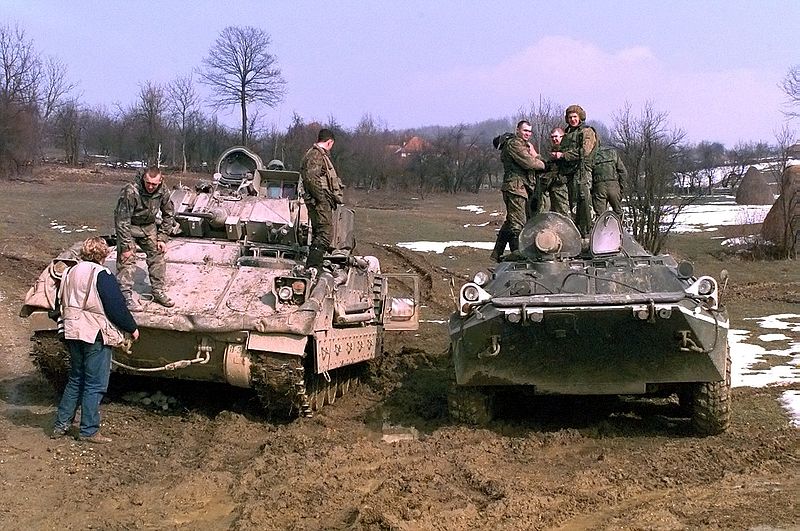
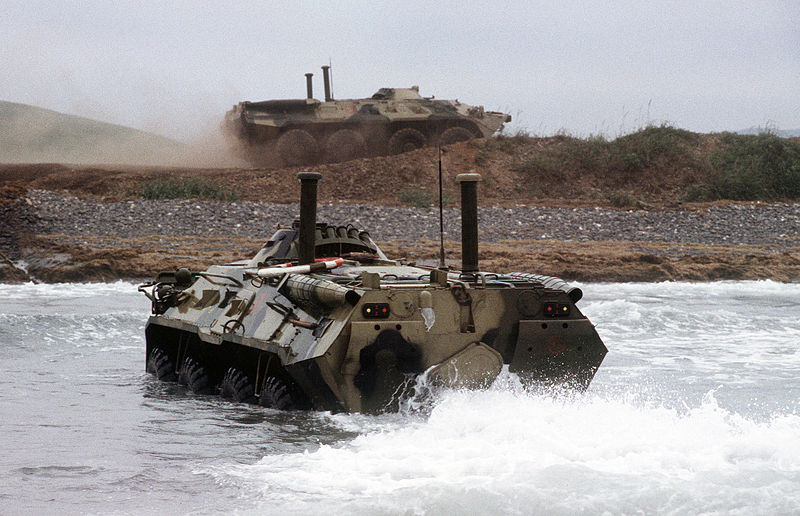
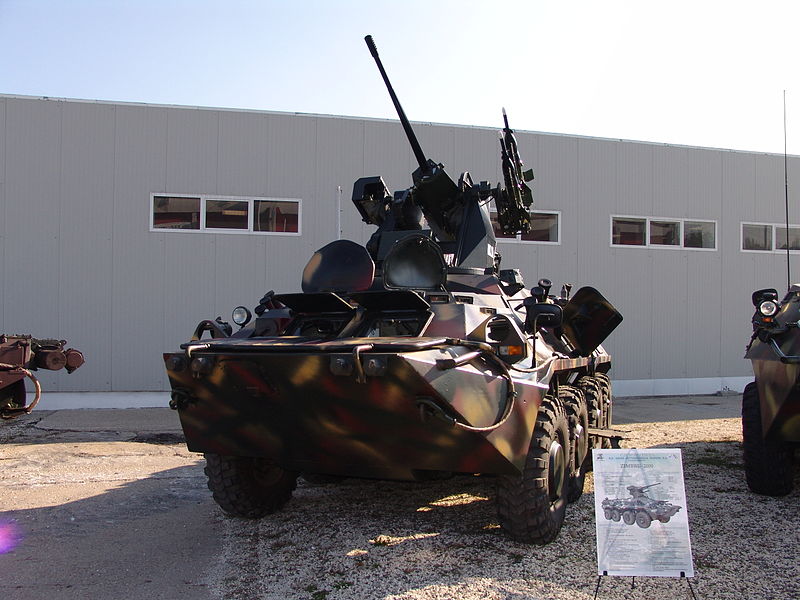
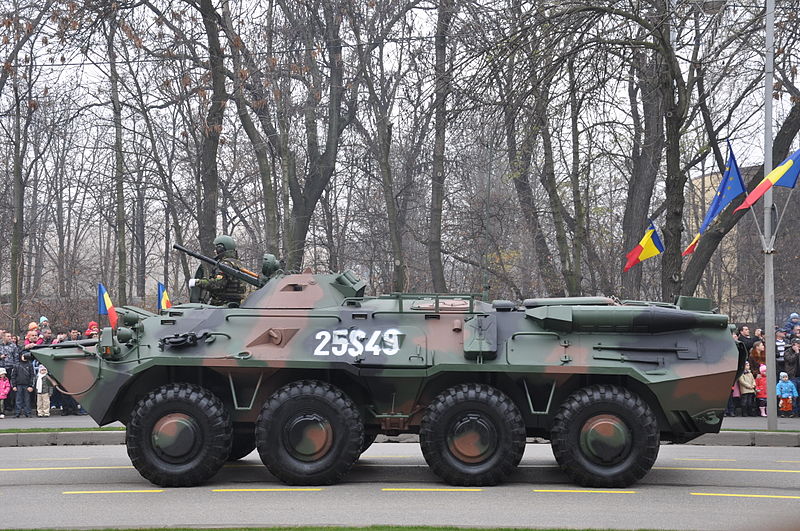

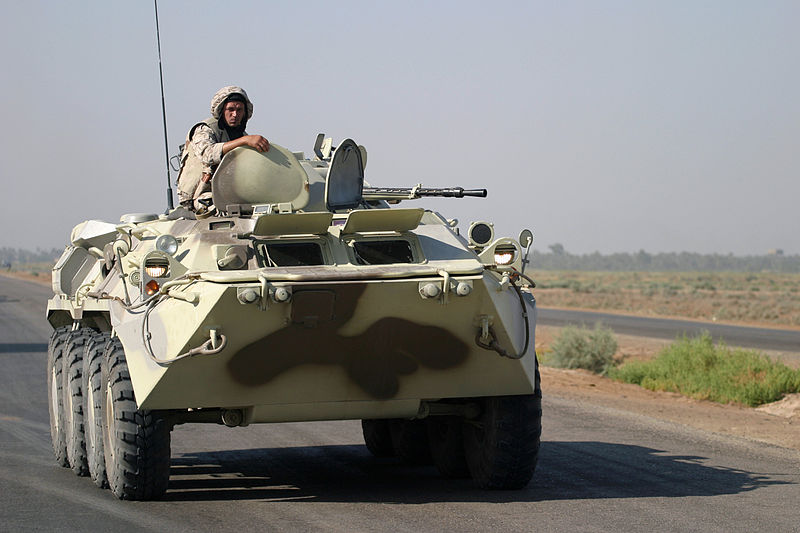
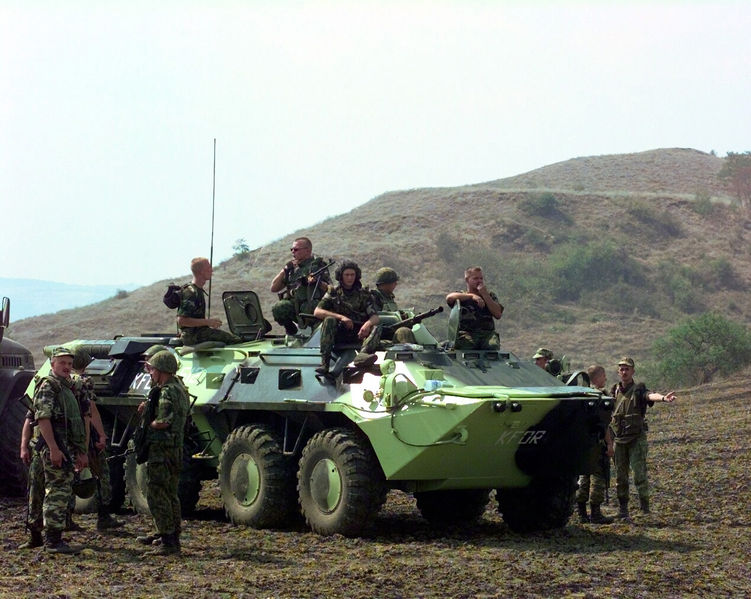

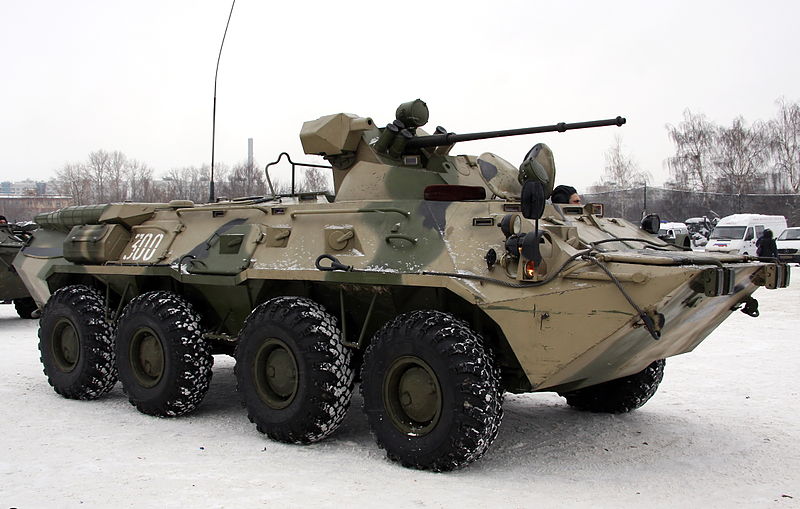
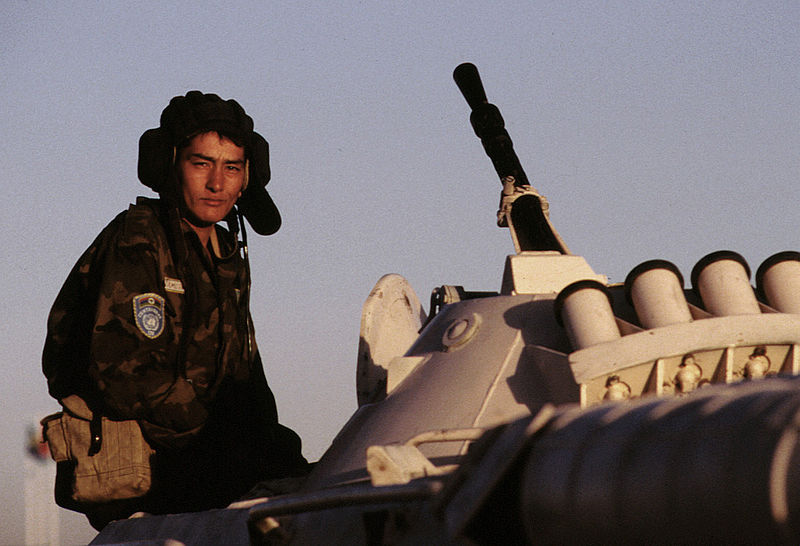
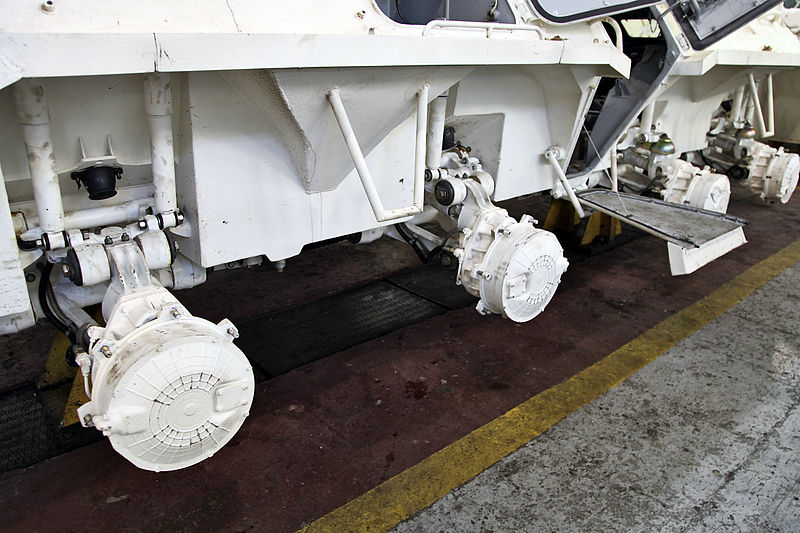
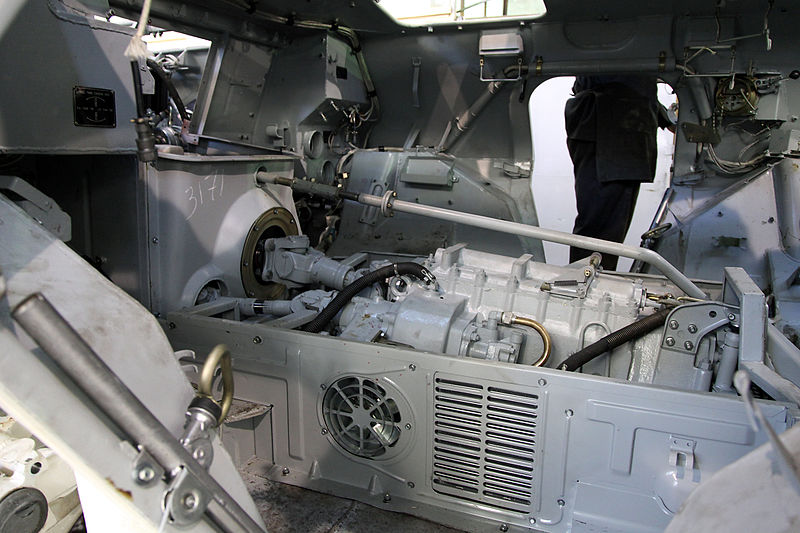
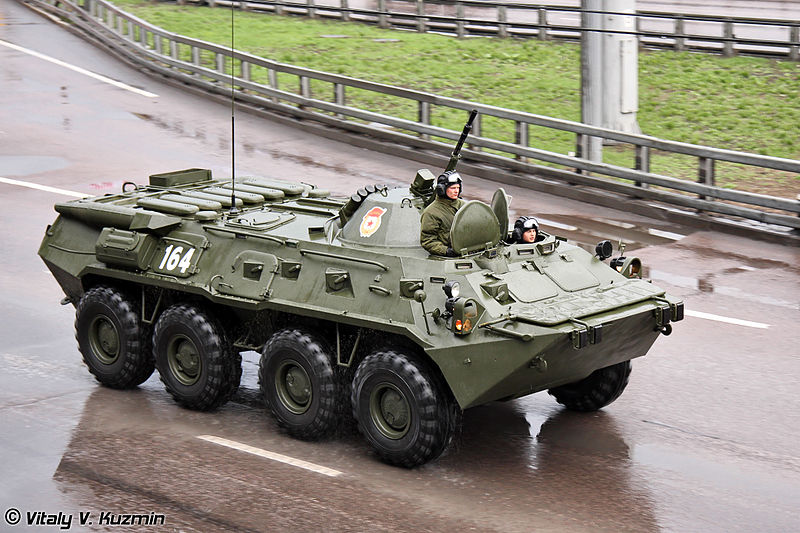
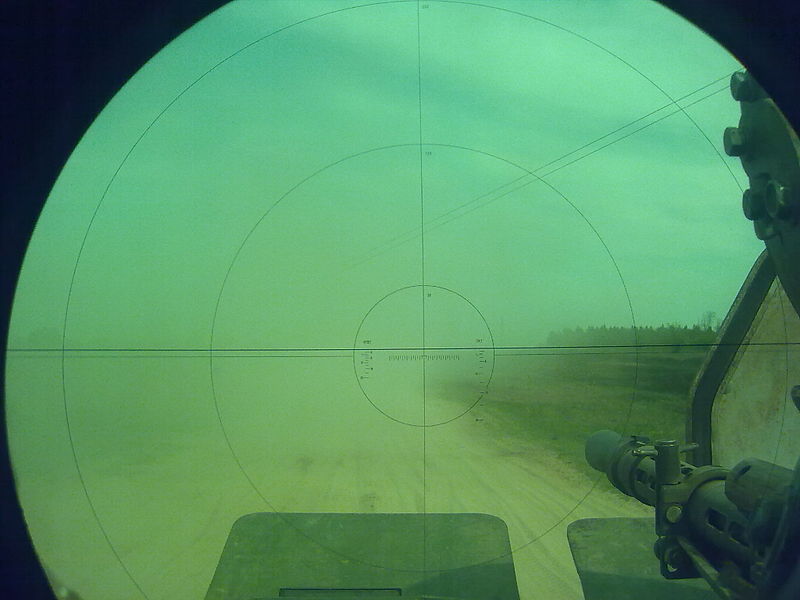
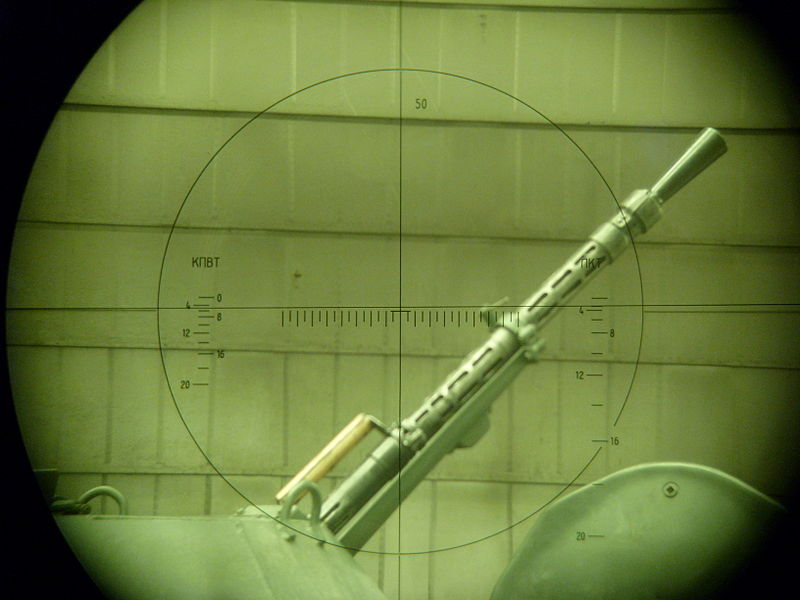
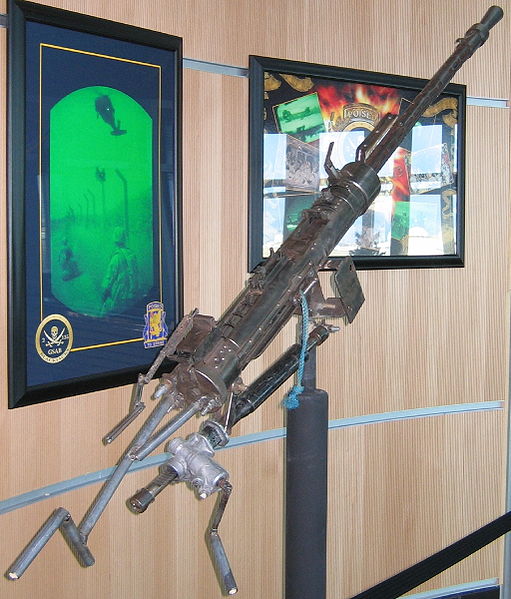
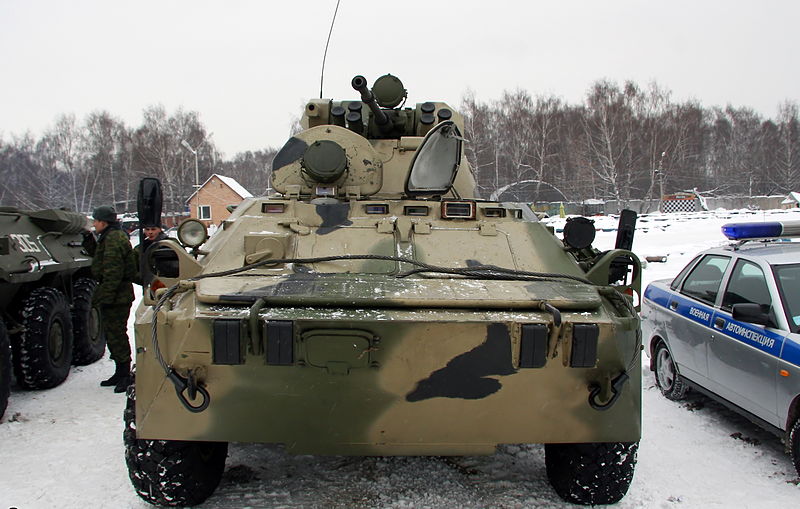

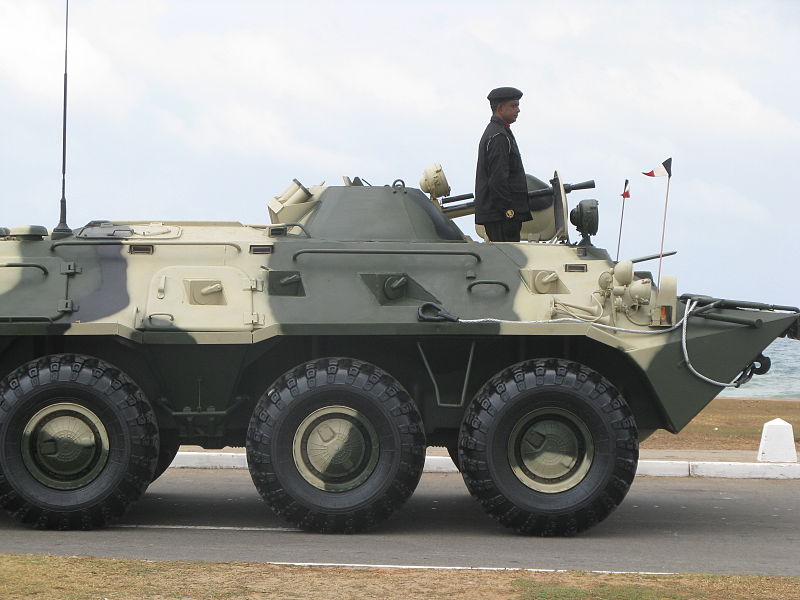
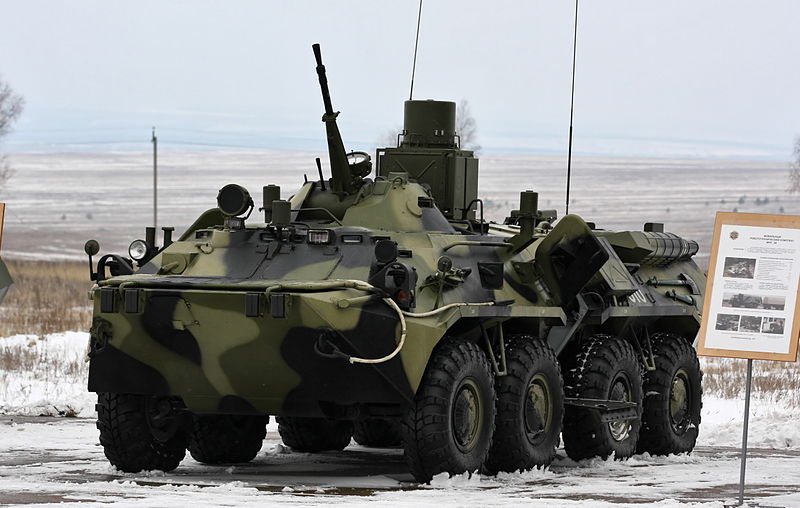
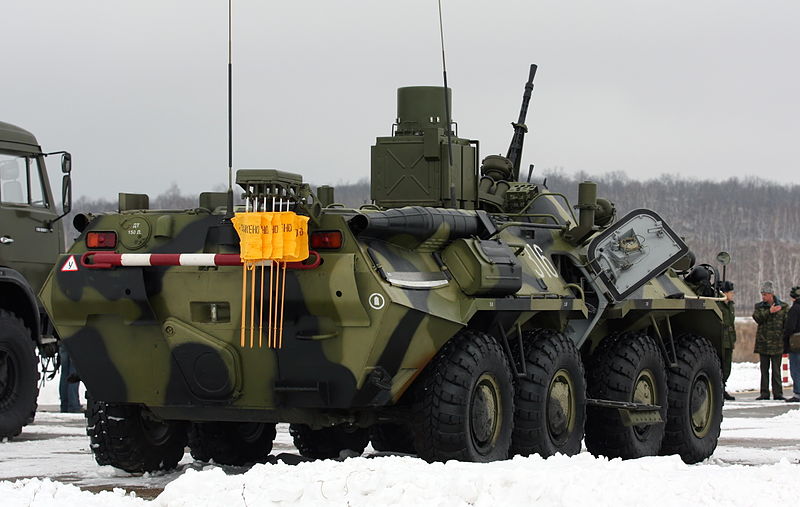
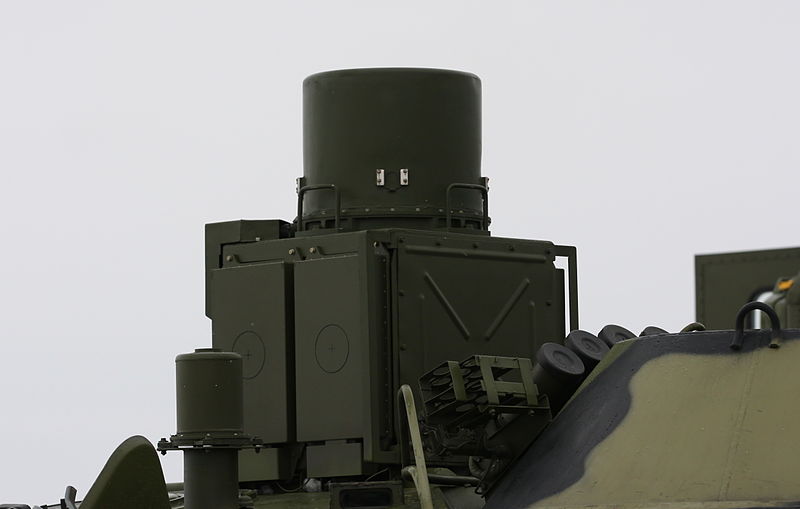
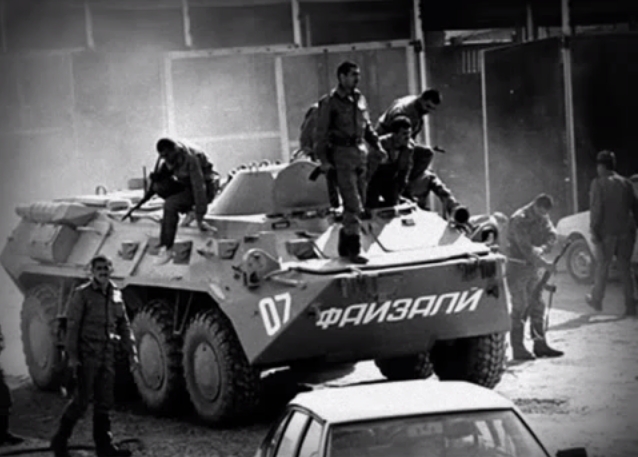
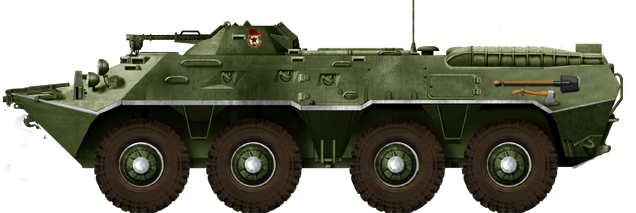
BTR-80, early production, in the Moscow May 1987 parade.
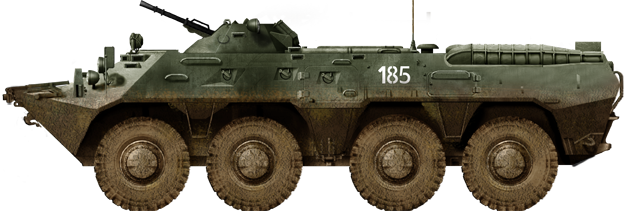
Russian BTR-80, early type
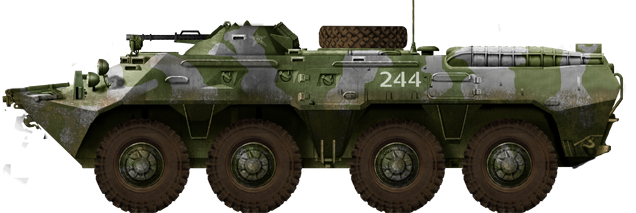
BTR-80 in Afghanistan, 1988-1989
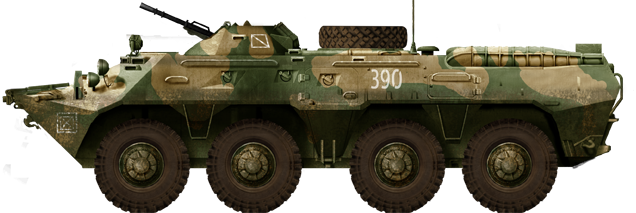
BTR-80 in Afghanistan
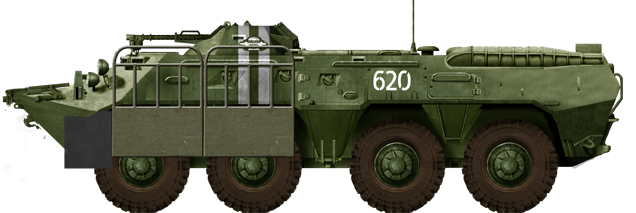
Ukrainian BTR-80 in Novorussia, Crimean conflict 2014
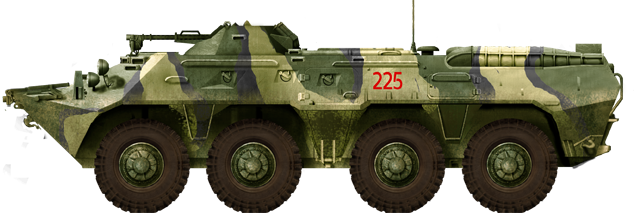
BTR-80, Naval Infantry
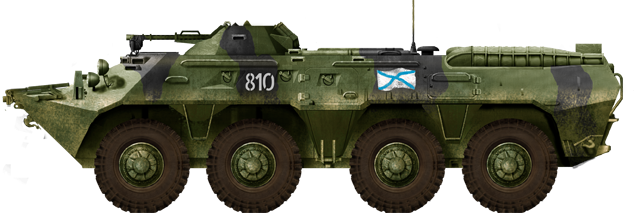
BTR-80, Naval Infantry

BTR-80, IFOR batallion, Balkans

Russian Bataillon KFOR
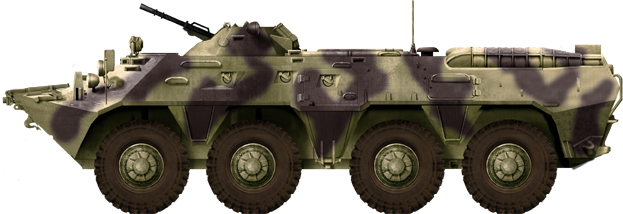
BTR-80 of the Ukrainian army in Iraq, Al Kut to As Suwayrah patrol area, Operation IRAQI FREEDOM
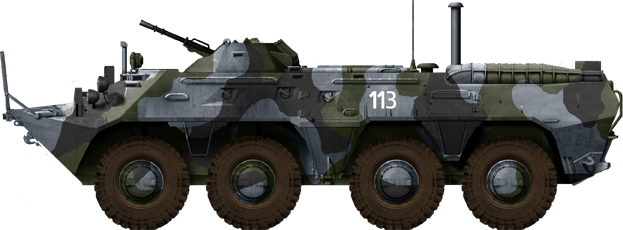
BTR-80 of the Ukrainian Marines
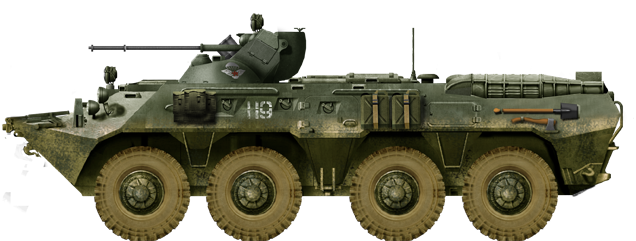
Russian BTR-80A
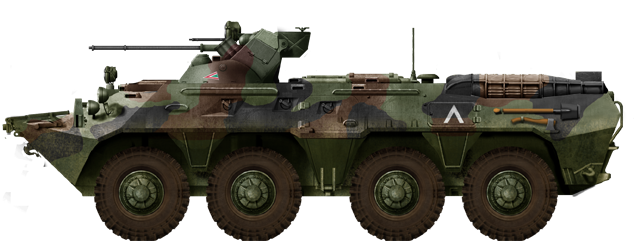
BTR-80A, Hungarian KFOR Batallion, Bosnia
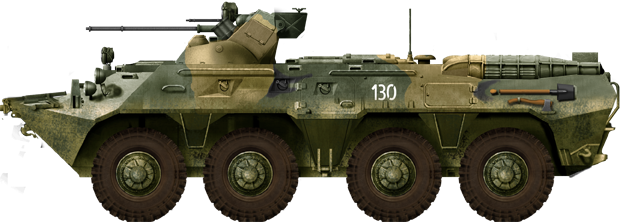
Russian BTR-80A as of today
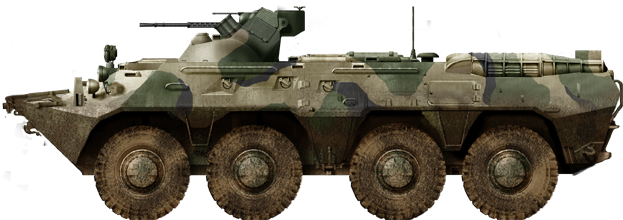
Russian BTR-82
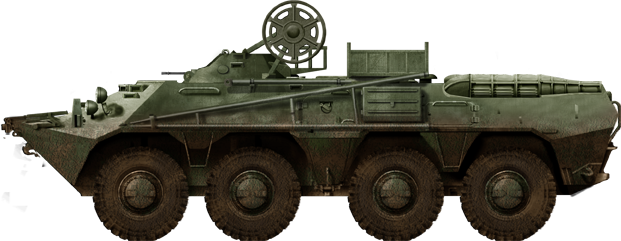
BREM-K armoured recovery vehicle
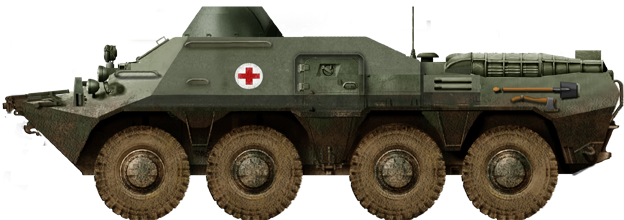
BMM-80 "Simfoniya" armoured ambulance
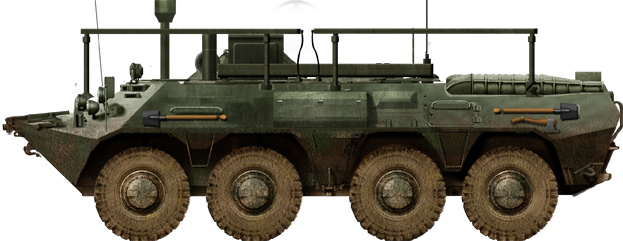
RKhM-4-01 advanced NBC reconnaissance vehicle
Links and more
The BTR-80 on wikipediaThe BTR-80 in Army-recoignition.net
БТР-80 wiki ru
R-149МА1
R-149BMR
BTR-80 Nat. Def. Univ. Ukraine
Ukrainian BTR-80UP

Cold War Tanks


































Cold war tanks posters

Cold War Main Battle Tanks

Cold War Soviet Army

